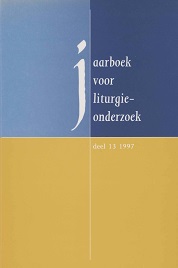Stiltecentra
Abstract
There is a growing interest for meditationrooms in many sectors of dutch society. As silence and meditation play an important role in our individualised culture, meditationrooms represent an essential aspect of contemporary religiosity. My aim in the present study is to give a description of so called stiltecentra (silence-centres) as they exist in different sectors. A stiltecentrum is a limited space where people can retreat to pray, to meditate or simply just to be silent for a while. We mainly come across these spaces in four different sectors: in health care institutions, in educational institutions, in churches and in (semi-)public buildings. It is very important for a good functioning of stiltecentra that they are well accessible, they have no restrictive time-schedule and are easy to find. Essential is a bright atmosphere, with simple and flexible furniture. The main points in the equipment are that they should not evoke the atmosphere of schools or hospitals. On the contrary, stiltecentra should help people to escape from their daily stress, and facilitate them to find themselves, eachother, or maybe God. A very important moment in this process can be the use of visual arts, for example painting, sculpture or textiles. In the context of stiltecentra, art may serve as a starting point for meditation. Art can express an entire spectrum of religious or philosophical themes and motives. But, it’s in the first place abstract arts, letting a lot of the interpretation to the viewer himself, that invites and incites the visitor to reflect on life or religion, or just to sit and have a moment’s peace. The last years have shown an ever growing interest for muslim prayer rooms. Many dutch hospitals nowadays are equipped with such facilities. Concluding this study I've made a typology of stiltecentra in the Netherlands. I distinguish three types, respectively the traditional-specific stiltecentra (such as the traditional catholic chapel), the universal-not coloured type (meditationrooms with a religiously neutral disposition, restricted to universal-human symbology), and, finally, the universal-coloured type (such as one space where different religious and cultural traditions are represented at the time).


